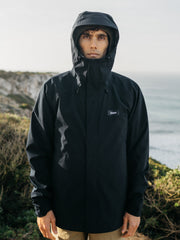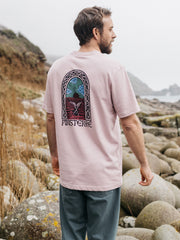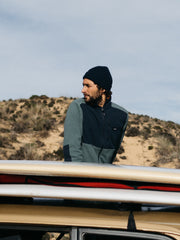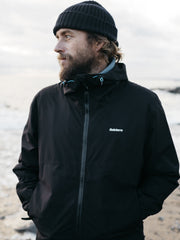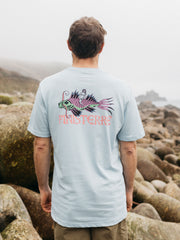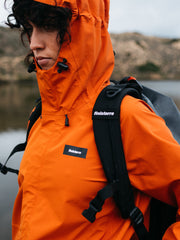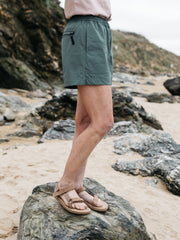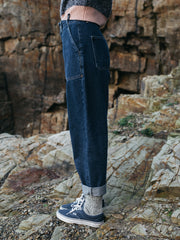Four walls and a roof for survival; hook for the hiker’s hat; meeting place for outdoor souls. Tucked in a valley or clinging to the slope, in an untouched corner between summit and sea, you’ll find the humble bothy. Outside the pace and priorities of everyday life, bothies run by their own rules. Strongholds for solitude and camaraderie in equal measure, explore the allure of the hut…
Shelter From The Storm
18.11.18
4 min read
Written by Chris Betty
Image by Maeva Cushla
But when chill blust'ring winds, or driving rain,
Forbid my willing feet, be mine the hut
That from the mountain's side
Views wilds, and swelling floods
William Collins (1746)
Picture a distant lamplit window. Squint towards the line of smoke, curling from a desolate horizon. Hut, bothy, hytte, gite, cabin, refugio. By any name, the remote mountain refuge is enough to stir the heart of any adventurer. Across the world’s wild places sit outposts for the weary; thresholds between outdoor and in. These huts and refuges have long played their part in mountaineering history and land lore, acting as repositories for stories, and immortalised in the words of wandering poets.
“To attain a sense of inner freedom, one must have solitude and space galore. Add to these the mastery of time, complete silence, a harsh life and surroundings of geographic grandeur. Then do the maths, and find a hut.”
Sylvian Tesson
But to the walker, the ‘munro bagger’, our hero in waterproof trousers; she who’s slinking into dusk with a heavy pack and aching thighs – the poetry’s beside the point. All the words in the world can’t capture the feeling of home for the night, a roof from the rain and walls to stay warm; the tingle of toes and fingers coming back to life by the warmth of a hastily lit fire.
“On our way back, we discovered a tiny hut beside a dam across the burn. It had no door, but a tin roof and an earth floor. It was luxury compared with another night in the rain…Under the persistent gaze of the bothy mouse, who sat in dark corners with his eyes on stalks – we read a book about Borneo and sympathized with the writer in the monsoon.”
Gwen Moffat
At the bedrock of the hierarchy of human needs sit the fundamentals: food, water, shelter. The stuff of living. Getting back to the basics focuses the mind and mentally resets wayward priorities. Just as water never tastes better than when you’re thirsty, there’s a deep joy in reaching shelter at the right moment. Whether it’s a windy packed-lunch or a high-stakes survival situation; however damp or mouse-riddled, the mountain hides palaces.
To find wilderness in the UK, you’d do best to seek out the outer edges and heartlands of Scotland. And if you do, you’ll find it speckled with refuges, or ‘bothies’, from the Cairngorms to the Highlands to the Outer Hebrides. When lifestyles changed after the Second World War, ‘bothying’ – staying overnight in abandoned buildings – became a hit with hikers. Collectively, they headed to the hills with newfound leisure time and a thirst to leave the growing suburbs behind.
“I wanted to live deep and suck out all the marrow of life, to live so sturdily and Spartan-like as to put to rout all that was not life, to cut a broad swath and shave close, to drive life into a corner, and reduce it to its lowest terms.”
Henry Thoreau
Scottish bothies are small outbuildings on farm-owned land, old workers’ huts or abandoned barns left open as basic shelters. Most of them have been kept in good nick by The Mountain Bothy Association, founded in 1965, who, in their own words, “exist to maintain remote buildings for which the owner has little or no use, yet remain important to walkers and others who make use of the shelter that they provide”. The work of the MBA helped to solidify ‘bothy culture’, and the ‘bothy code’ – those unspoken rules of etiquette that make staying in a bothy a unique experience.
The typical bothy is spartan. You must bring your own supplies, firewood and sleeping gear. You might find dry matches and emergency supplies on shelves, human traces that say – “you are welcome here”. It’s an unspoken welcome from an invisible community that demands respect in return – an acknowledgment of the code. Regular bothy-ers, for example, know to leave the bothy and the surrounding land cleaner than they found it, to move on after a night or two, and to avoid small shelters with large groups.
The community meets in messages, if not in person. Nearly all bothies house a log book. Collective diaries stack an overlapping map of encounters. People and stories concentrated under one roof, pinned to a single pair of distant coordinates. Scrawled in rain-blotched biro you’ll find accounts of adventures large and small. Doodles, sightings, poems and debates. Four small walls and little else to distract mean bothy book entries can be surprisingly profound.
“A Brave oasis in the indifferent moors
And while the stories circulate like smoke,
The sense of life spreads out from the one-eyed house.”
Louis Macniece
Symbolically, the mountain cabin may be shorthand for wistful solitude. But, and better, a night in a bothy can be a bracingly communal experience. At the heart of the code lies the mantra: turn no one away. Ask any veteran and they’ll regale you with stories of chance meetings and happy gatherings, because there’s no booking out a bothy. Until the floor’s full there’s space for any and all who arrive. The beauty is in the unknown. A day might end with just the elements for company, or the sun could set on stories between strangers, shared around a dram, only to part ways again in the morning: fed, watered, warmed.
I was burned out from exhaustion, buried in the hail
Poisoned in the bushes an' blown out on the trail
Hunted like a crocodile, ravaged in the corn
Come in, she said
I'll give you shelter from the storm
Bob Dylan (1975)
The best-kept bothy secrets will remain that way. But if you’ve a lusting for mountain air and a night in a shelter, here are two of the most iconic bothies in Scotland that’ll set you on the road to the more hidden places…
Magersta Bothy
Clinging to the cliffs on the Isle of Lewis, Magersta – or the ‘eagle’s nest’ – is a shelter built of stones, a refuge with an eye towards stormy Atlantic seas.
Tarbet Church Bothy
On the strip of land between Loch Nevis and Loch Morar, an abandoned church offers shelter for the night.


